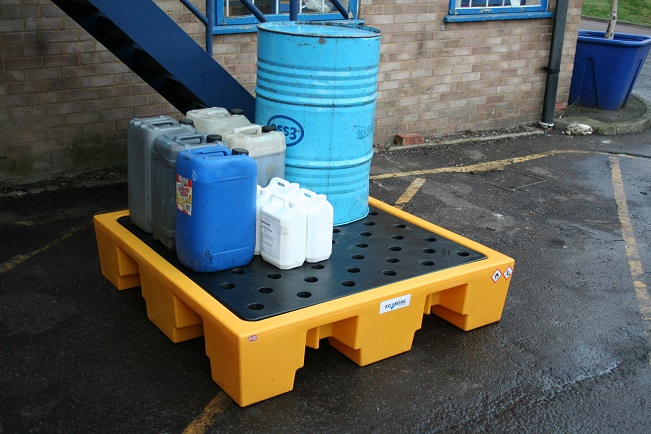Wherever liquids or chemicals other than water are being handled and stored, a proper spill containment system is an absolute must-have to protect everyone on the premises. Bunding is a common method of spill control that’s commonly used to set a perimeter and act as a barrier to prevent spillage in the event of mishandling, or an accidental spill from a storage container.
However, implementing a spill containment system isn’t as simple as buying spill pallets. It requires a professional risk assessment to determine the necessary spill containment measures. Additionally, there should be trained employees on how to properly prevent and respond to a spill. This includes making sure the spill response equipment is in good shape, that employees know how to use it, and where it’s located.

The bunding system and the materials it’s made of must be able to prevent the liquids it contains (regardless of whether they’re flammable, non-chemical or chemical liquids), from leaking or spilling into the surrounding area. In other words, the system should be built of materials that are insusceptible to the liquids they are protecting against, while being strong enough to not leak or burst. Furthermore, spill containment systems that are protecting against flammable liquids must be fire resistant. Un-reinforced materials and earthen bunds aren’t recommended.
- Spill containment systems can be either permanent or temporary. The most common types are:
- Drum racks and spill containment systems that are specifically designed for containing liquids stored in drums;
- Intermediate bulk containers that are used for bunding bulk containers;
- Bladder systems and spill decks – versatile systems that are capable of capturing even the smallest of spills. You can tailor these solutions to your specific requirements;
- Spill pallets – a temporary spill containment solution that’s oftentimes used for transporting liquids. The pallets should always be stored in a level area and should always be covered so that they don’t fill with rainwater.
- Spill berms and drain seals are used where there’s a chance of liquids going inside drains.
Routine maintenance and inspection should be performed on all bunding and spill containment equipment frequently. Some of the most common issues that arise include:
- Stormwater accumulating in bunds;
- Damaged bund integrity;
- Damaged chemical resistant linings;
- Gaps or cracks in bunds;
- Accumulation of previous spills inside the bund;
- Improper installation of pipework;
- Earthing system installed through the bund walls;
- Shrunk flexible joints between the concrete section, resulting in bund gaps.
























